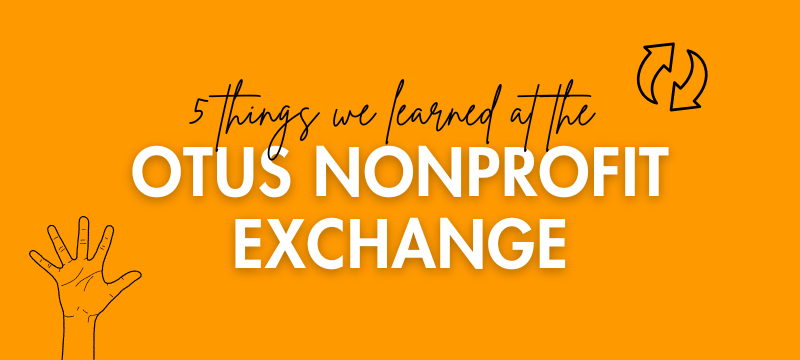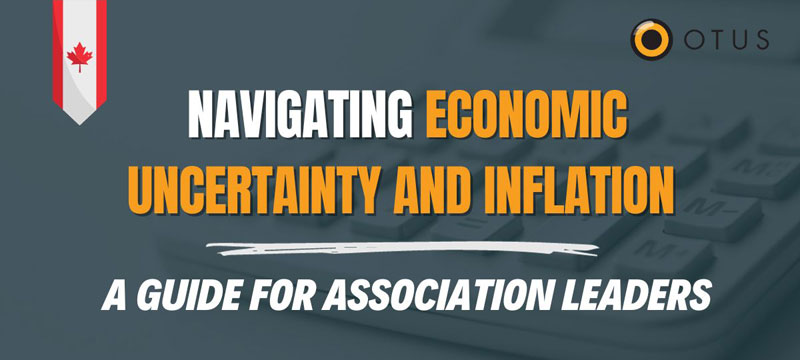Economic uncertainty and inflation are two significant challenges that association leaders must contend with in…

5 Key Nonprofit Leadership Trends
On June 4th, over 100 nonprofit leaders joined us at the OTUS Nonprofit Exchange (ONE) in Ottawa. We talked about everything from hiring struggles to funding gaps to the future of our sector.
But beyond the formal presentations, it was the hallway conversations, table discussions, and honest questions that revealed what’s really on people’s minds.
Here are five key takeaways—and one bonus insight—we think every nonprofit leader should sit with. These themes point directly to the nonprofit leadership trends 2025 is already shaping.
1. “Nonprofit” Is a Tax Status, Not a Mindset
Being a nonprofit means you’re registered with CRA—but it doesn’t mean you have to operate from a place of limitation.
You’re still allowed to grow.
You’re still allowed to generate revenue.
You’re still allowed to reinvest in your team and infrastructure.
Many attendees shared that they’re working to shift their board’s thinking—from “we can’t afford to” to “how do we make it work?” This mindset shift is one of the clearest nonprofit leadership trends for 2025.
2. Little Bets Lead to Big Wins
There’s no single revenue strategy that fits every organization. But the nonprofits seeing the most traction are the ones trying small experiments—“little bets”—to test new ways of generating income.
Whether it’s piloting a social enterprise, offering paid training, or repackaging an internal process as a service, the theme was clear: start small, learn fast, and adjust as you go.
If you wait until you have a perfect plan, you’ll never get started.
3. Scarcity and Uncertainty Are Still Running the Show
Despite progress in some areas, we heard a lot of hesitation from leaders:
“We’d love to invest in that—but we don’t know what’s coming next.”
“We can’t take the risk of launching something new right now.”
“We’re not sure how long our funding will last.”
This mindset is understandable—but also limiting. It prevents innovation and puts organizations in reactive mode.
We don’t need to ignore the risks—but we do need to start building a culture that’s more proactive, even in uncertain times.
4. Succession Planning Can’t Wait
Most organizations aren’t ready for what happens when a long-time executive, finance lead, or board chair steps away.
We heard stories about:
-
Transitions that were rushed or unclear
-
Key knowledge lost when someone left
-
A scramble to “figure things out” on the fly
Succession planning isn’t just about leadership. It’s about systems, training, and making sure no single person is a gatekeeper. This needs to be a standing item on every board’s agenda.
5. Leaders Are Craving Connection
This wasn’t a formal takeaway—but we couldn’t ignore it.
People lingered long after sessions ended. They swapped stories. They asked honest questions. They admitted what they didn’t know.
What we saw was clear: nonprofit leaders are tired of doing it alone. They want spaces where they can talk shop, trade ideas, and be real without judgment.
That’s why we built ONE in the first place—and why it’s a reflection of where nonprofit leadership trends 2025 are heading: toward collaboration, candour, and community.
Final Thoughts
The problems facing nonprofits aren’t small. But the energy, honesty, and willingness to explore new approaches at ONE were encouraging.
If there’s one thing we hope people walked away with, it’s this:
You don’t have to wait for permission to think differently about your organization.
The future of our sector will belong to the ones who build it together—openly, strategically, and just a little bit braver than before.
Want help figuring out your next step? Book a call with our team to talk through what financial leadership could look like for your nonprofit.



